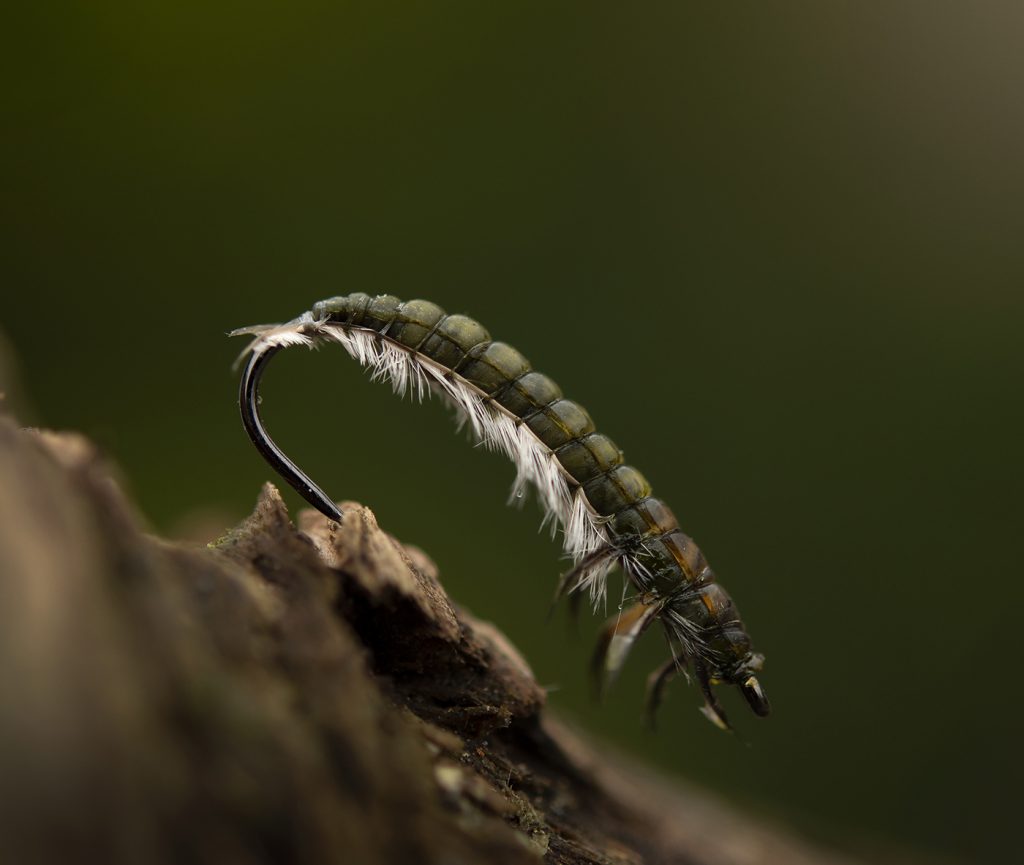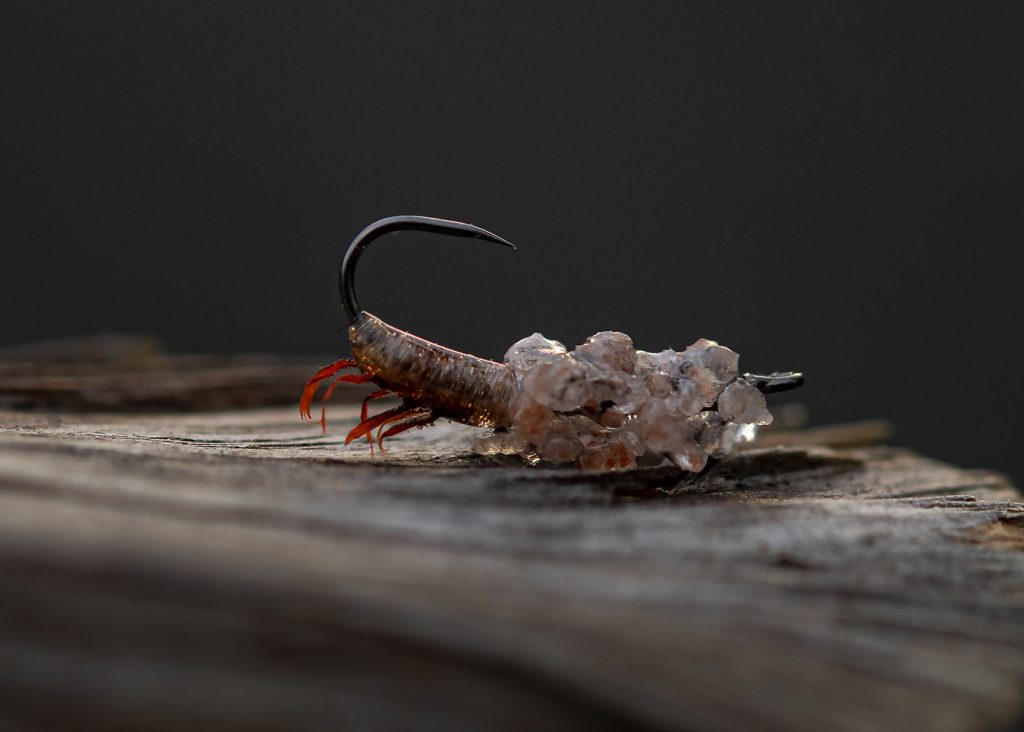
Like may fly nymphs and the nymphal- or larvae stage of any insect, the adult part of the life cycle is the shortest. The large mayflies can live for days, the smallest perhaps only for a hours. Caddis are generally the same – the larger species can live for several days, the smaller just a few days. After mating and egg laying they both die and become spent spinners – a stage off the life cycle the fish know well, since they are easy prey, unable to escape.
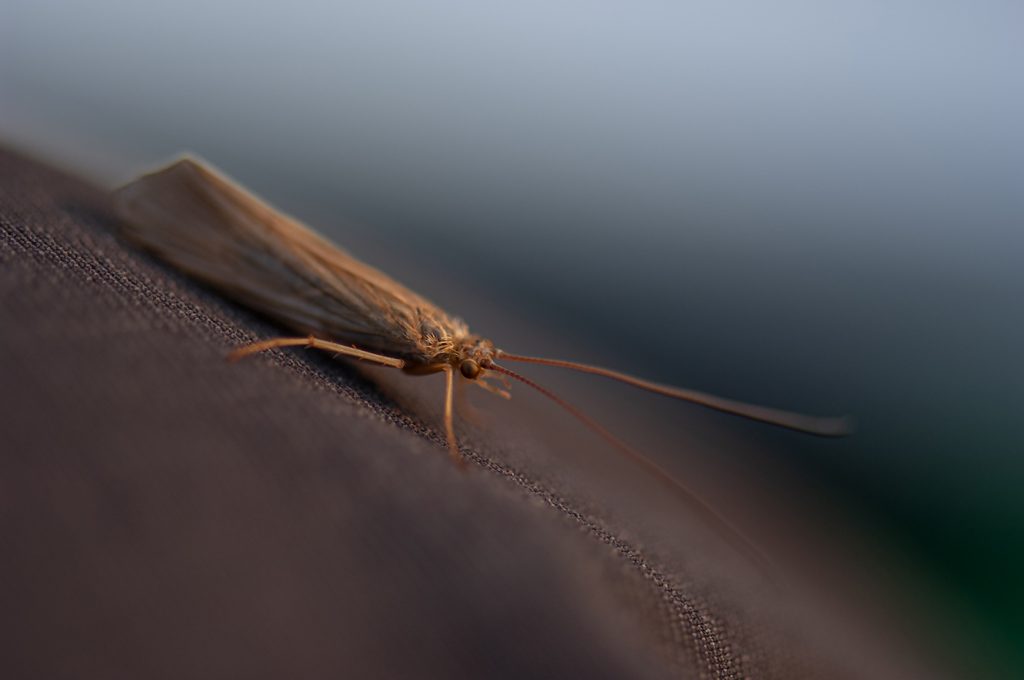
Last week I wrote about the adult caddis and why it’s both and interesting insect to fish and tie for the fly fisher, new and seasoned. I mentioned above that the adult, winged stage is short. And while the fishing is visible, fun and sometimes quite intense, the nymphal stages are far more important as food for the trout and grayling.
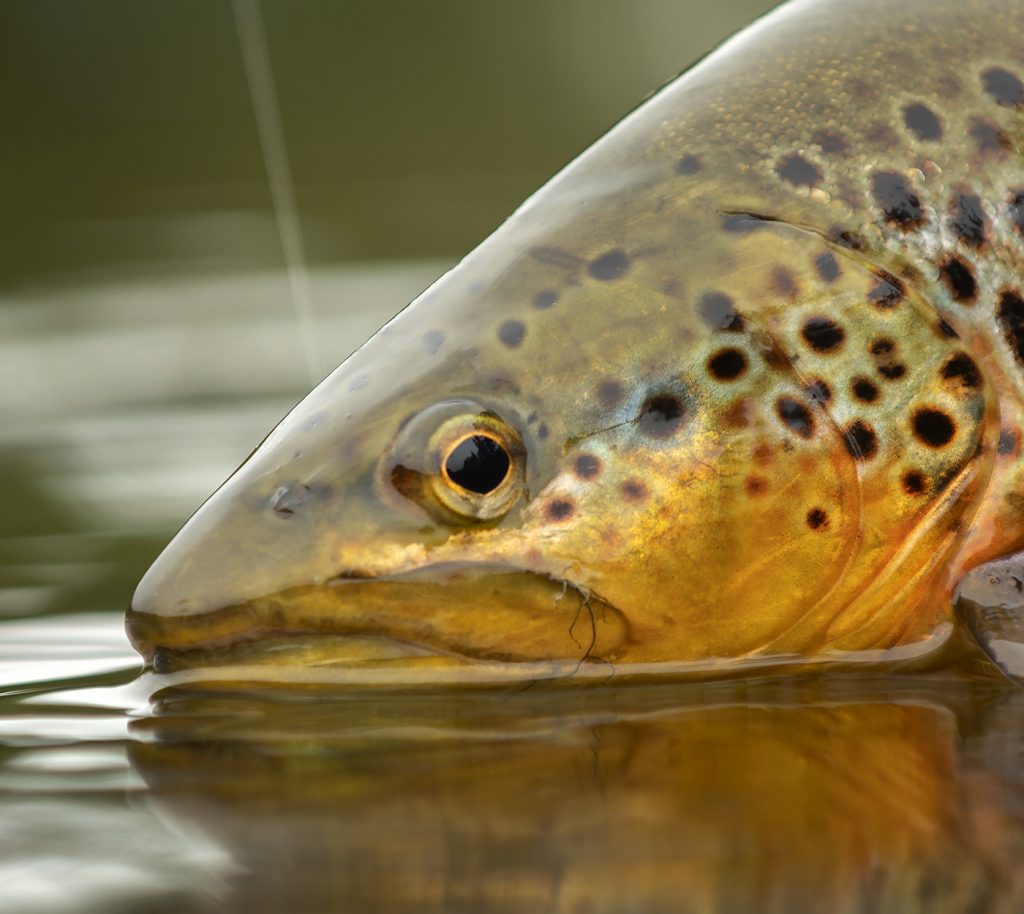
There are many, many more species of caddis than there are may flies and there’s absolutely no need to go into details – here or by the river. There are generally three different types of nymphs: The case builders, the net builders and the free roamers.
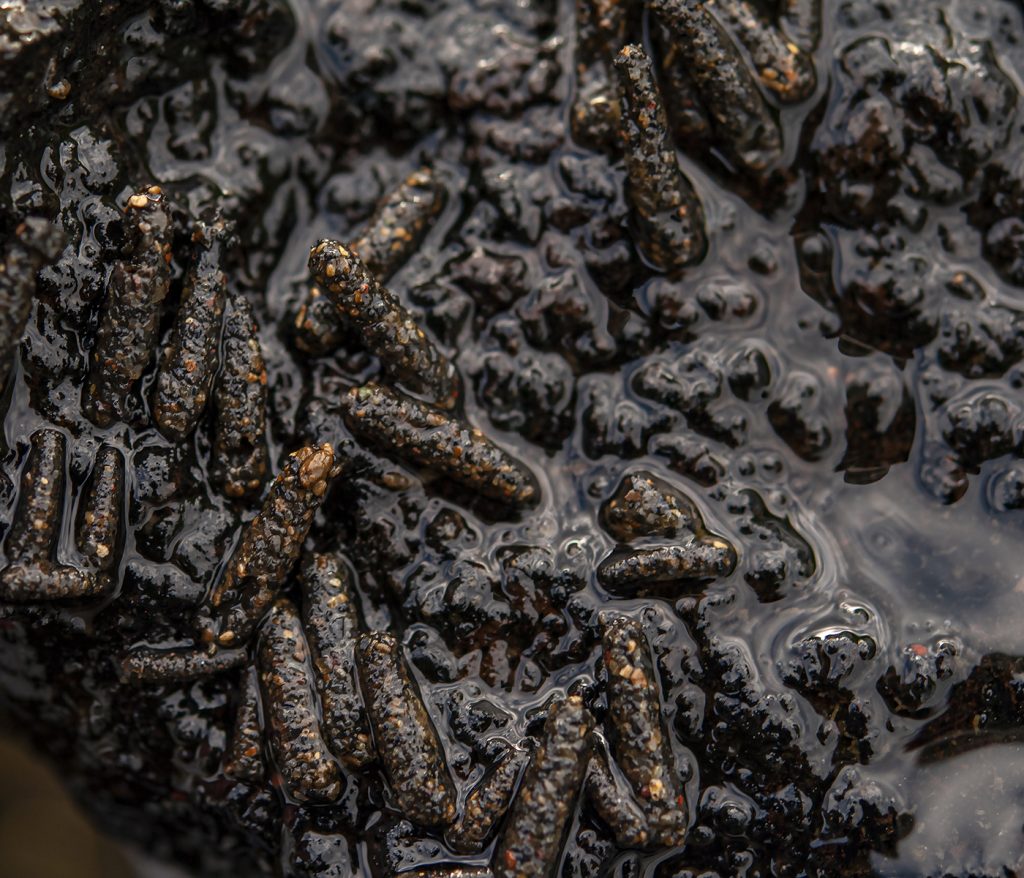
The case builders are found on the bottom, on stones, on sunk tree trunks and so on. They’re quite well camouflaged, yet easy to spot if you turn a stone. The different species may prefer different types of materials for the cases. Small pebbles and small twigs are popular. The form long, slightly tapered, round or rectangular cases, one end closed and the other end open, where you can see the head of the larvae. The larvae’s head is black or dark brown while the body is usually in lighter colour. Case builders are found in all sizes.
Imitations should be fished deep, so don’t spend too much time tying exact imitations. I prefer a variation of Hans van Klinken’s legendary lead head, which is easy and fast to tie.
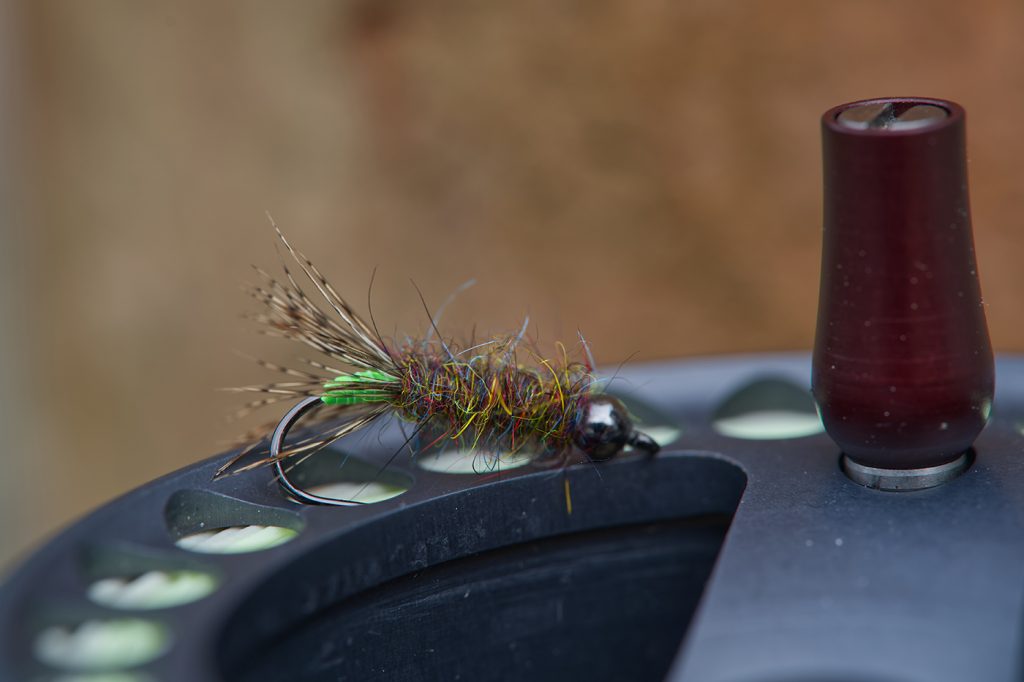
The net builders are technically free roamers as they build no case, but they build a small, funnel shaped net that catches their food. These are found both on the bottom and in the vegetation. Generally these have light coloured abdomens (creamy over light olive to tan/light brown) and darker thoraxes. The are most easily recognised by a row of breathers on the underside of the abdomen. Sizes are enerally in the hook-size 10-14 range.
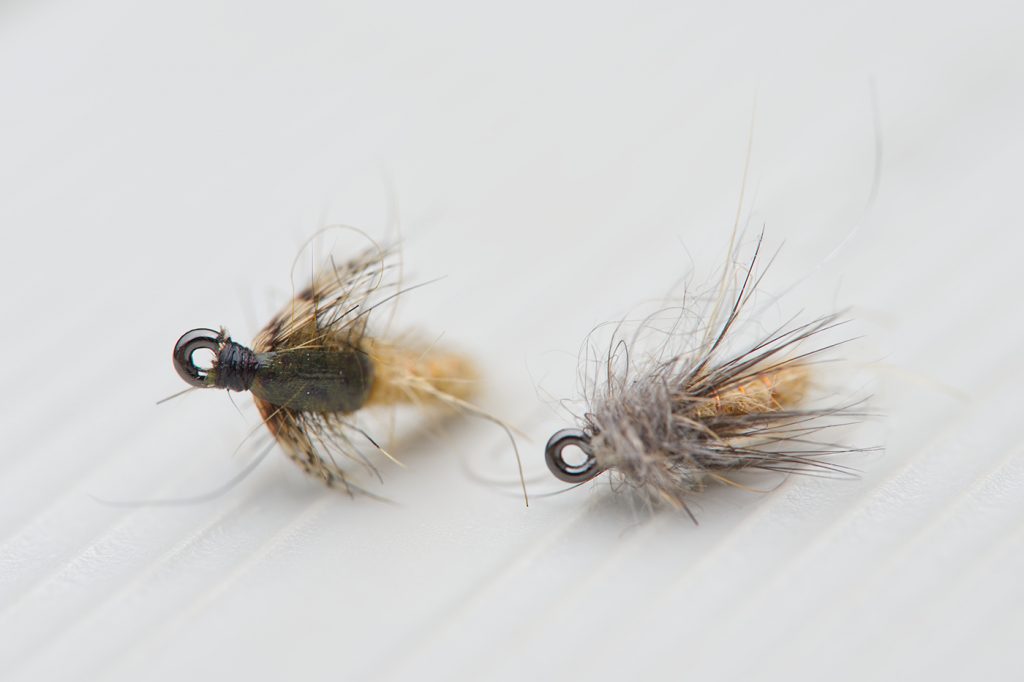
And finally the “genuine” free roamers. Typically quite bright green bodies and a slightly darker thorax. The have three pairs of fairly stout legs that allows them to grab on to vegetation. The colour makes them easy to recognise. They are generally in the size 10-12 range.

Opposed to may flies, all caddis flies undergo what’s called complete metamorphosis when they go from nymph or larvae to the adult, winged insect. This basically means that the have a pupal stage. When these pupae rise to the surface (some hatch underwater) they are an easy prey for trout and grayling, so it’s worth having an imitations. In the pupal stage they have pronounced wings butts, usually tucked up against the abdomen, sloping downwards and the colours vary a lot. I tie these both weighted and un weighted and sometimes they are just excellent fish catchers.

More exact imitation are quite satisfying to tie and fish, but certainly not necessary, so if you’re in a hurry, simply tie a batch of the generic ones. If you have time in the winter evenings. Why not try your hand a one or two of the more exact imitation?
Below is a few examples of some super-realistic flies from some of our friends – enjoy and perhaps be inspired.

